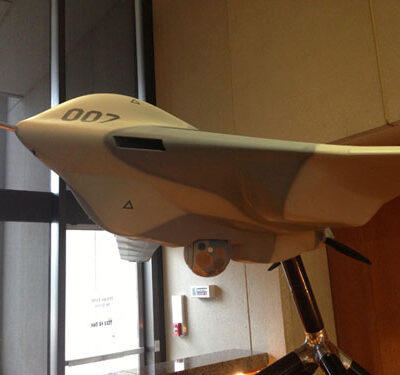News & Commentary
Journal Entry 3: What’s the FAA got to do with it?
Currently, there are some challenges and limitations to fully integrating drones into the national airspace. All aircraft flying outside of restricted space are required to “see and avoid” other aircraft. Drones don’t have the ability to see and avoid, so the FAA requires a second operator who can watch while the pilot flies it. Drones can only fly out of sight of the second operator if they have special clearance and a specified flight pattern away from which the FAA can direct other flights (so planes don’t run into each other.) Because of these limitations, the FAA is allowing limited drone use by public and private sector.

Journal Entry 2: Drones: “In theater” and in Ohio
The industry really tries to differentiate between military use “in theater” (in a battle) and civil use. The military uses drones primarily for two purposes: intelligence gathering/surveillance (such as the Global Hawk) and targeted strikes (such as the Reaper, which is larger and more heavily armed than the Predator).

Journal Entry 1: Game of Drones
I’m deep undercover at the Ohio UAS Conference. My cover story? “I’m just a part-time social work professor with an interest in drones and other new technologies.”
My real story? As part of the ACLU of Ohio legislative team (and a self-identified tech geek) I want to learn more about this technology born for the battlefield and making its way into our backyards. While there seem to be potential benefits to drones, I am very concerned about individual privacy – especially since Ohio doesn’t have laws regulating use of drones.

SCOTUS Scorecard
Last week marked the end of a historic U.S. Supreme Court term for the ACLU and civil liberties.

Senate plays dirty to put squeeze on abortion clinics
Once again, our legislature has made an absolute mess of the budget process, and for what? So it can play games with our money, with our vote and with our health-care decisions.

Stay Informed
Sign up to be the first to hear about how to take action.
By completing this form, I agree to receive occasional emails per the terms of the ACLU’s privacy statement.
By completing this form, I agree to receive occasional emails per the terms of the ACLU’s privacy statement.


